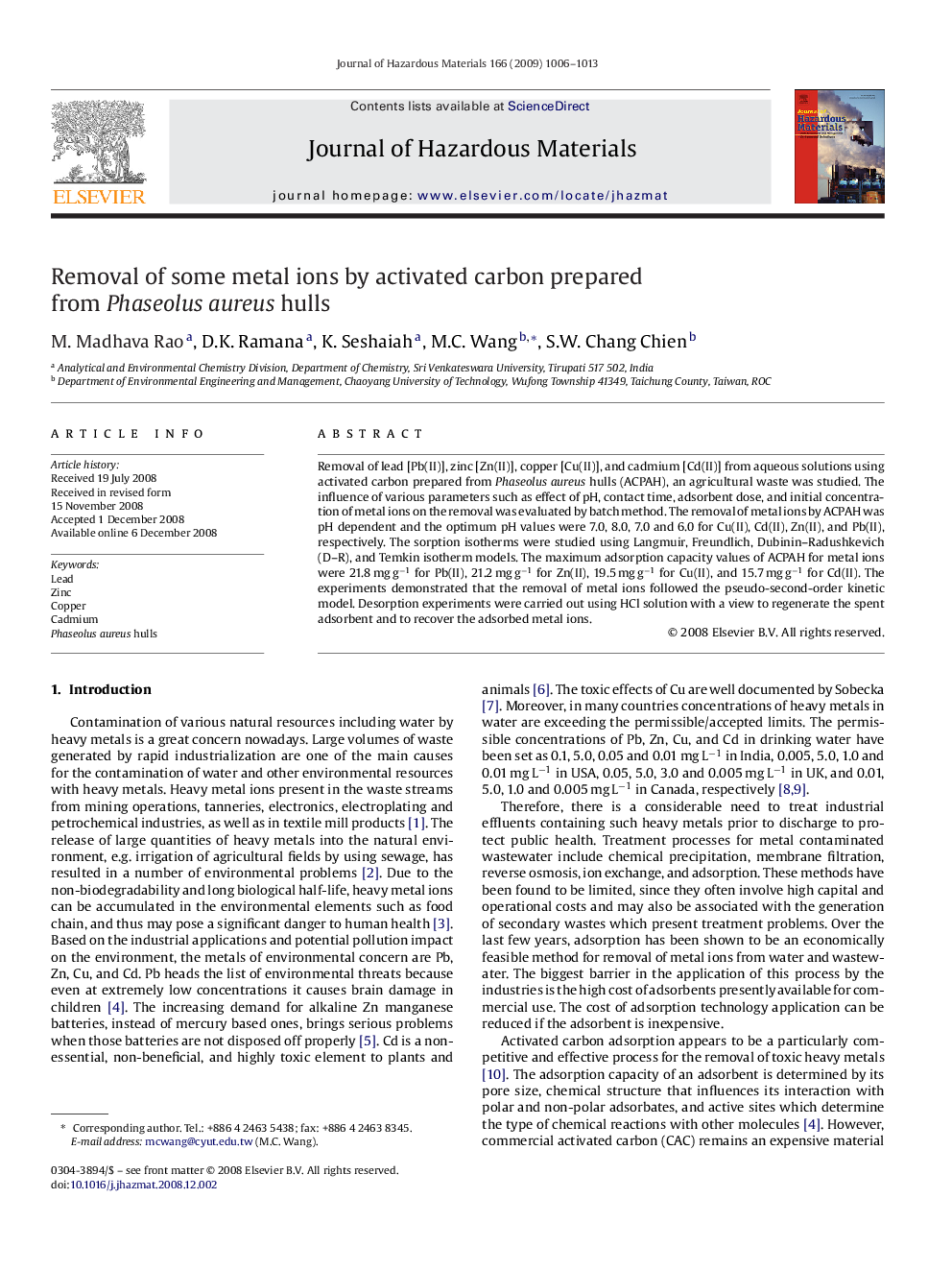| Article ID | Journal | Published Year | Pages | File Type |
|---|---|---|---|---|
| 582045 | Journal of Hazardous Materials | 2009 | 8 Pages |
Abstract
Removal of lead [Pb(II)], zinc [Zn(II)], copper [Cu(II)], and cadmium [Cd(II)] from aqueous solutions using activated carbon prepared from Phaseolus aureus hulls (ACPAH), an agricultural waste was studied. The influence of various parameters such as effect of pH, contact time, adsorbent dose, and initial concentration of metal ions on the removal was evaluated by batch method. The removal of metal ions by ACPAH was pH dependent and the optimum pH values were 7.0, 8.0, 7.0 and 6.0 for Cu(II), Cd(II), Zn(II), and Pb(II), respectively. The sorption isotherms were studied using Langmuir, Freundlich, Dubinin-Radushkevich (D-R), and Temkin isotherm models. The maximum adsorption capacity values of ACPAH for metal ions were 21.8 mg gâ1 for Pb(II), 21.2 mg gâ1 for Zn(II), 19.5 mg gâ1 for Cu(II), and 15.7 mg gâ1 for Cd(II). The experiments demonstrated that the removal of metal ions followed the pseudo-second-order kinetic model. Desorption experiments were carried out using HCl solution with a view to regenerate the spent adsorbent and to recover the adsorbed metal ions.
Related Topics
Physical Sciences and Engineering
Chemical Engineering
Chemical Health and Safety
Authors
M. Madhava Rao, D.K. Ramana, K. Seshaiah, M.C. Wang, S.W. Chang Chien,
